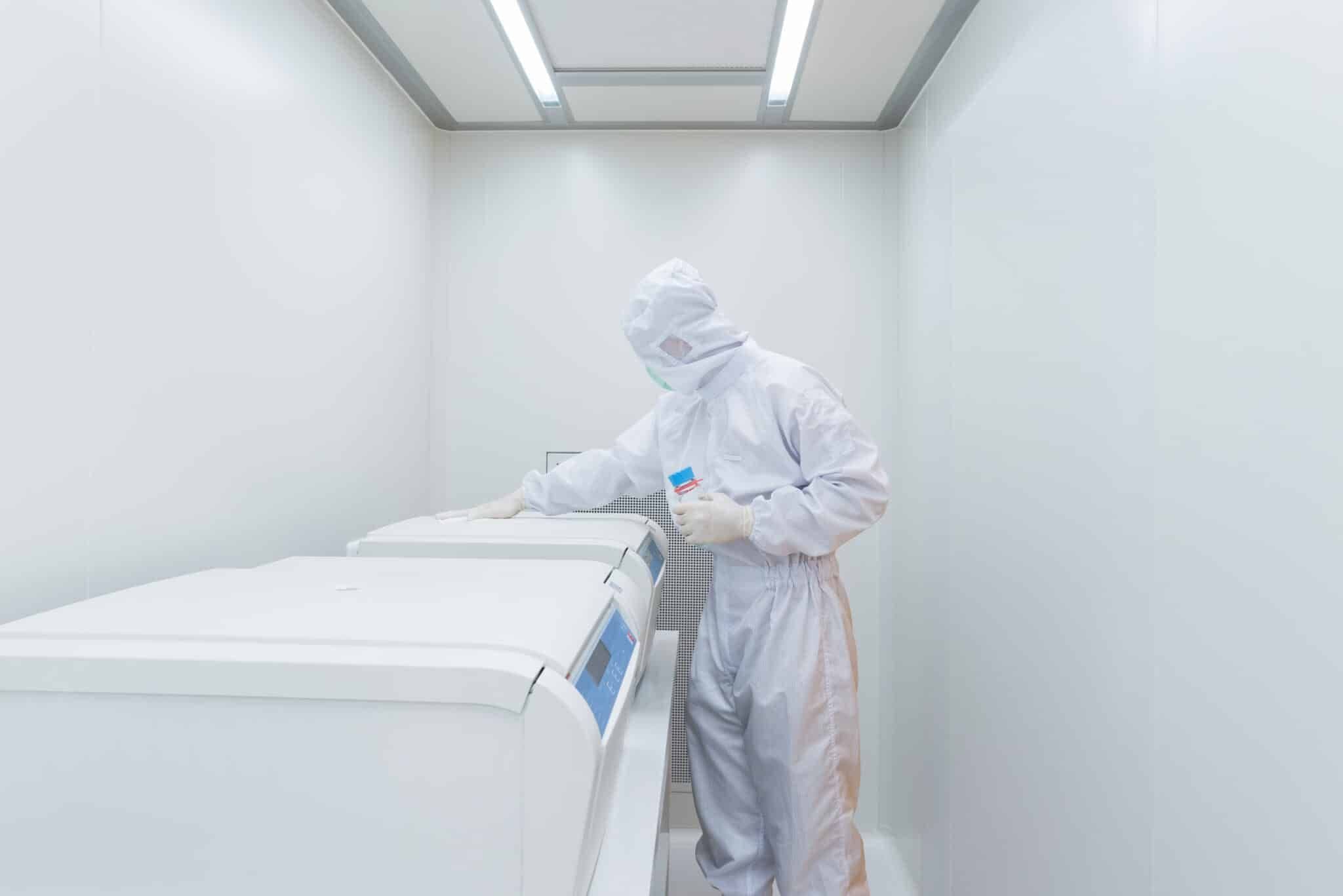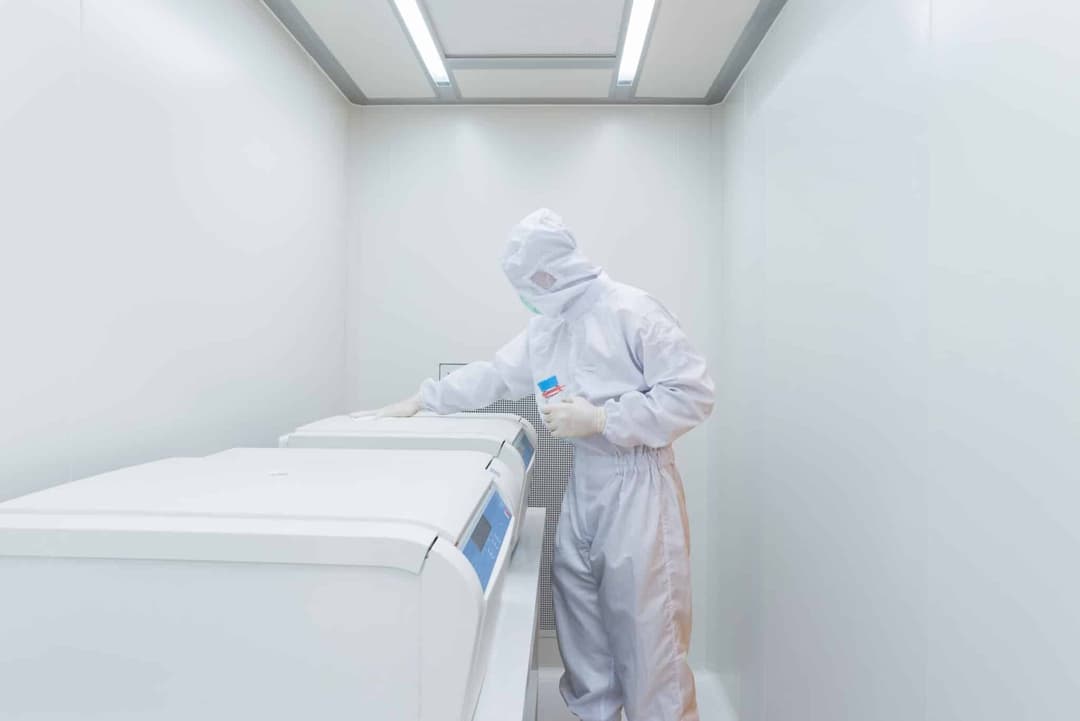

A Residual Problem in Cleanrooms…
A Residual Problem in Cleanrooms…
The new guidelines make the distinction between ‘cleaning’ and ‘disinfection’, as highlighted in a number of presentations at the recent Cleanroom Technology Conference 2023 held in Birmingham.
Users need to demonstrate an effective cleanring regeime that both acknowledges that residues will build up on surfaces and how they manage this. Different cleaning / disinfection agents leave various types of residue which accumulate at different rates depending on the surface and the method of application and removing them can be problematic, particularly if they have been allowed to build up over time.
Echoing presentations at the conference by both CONTEC and Vileda, our advice at ISO Cleanroom is to make sure you know the potential residue pitfalls with the cleaning agents you are using, and put a protocol in place for removing them.
What are cleanroom residues?
Residues can be left by raw materials, buffers, media and excipients as a result of the manufacturing process – but environmental chemical residues can also be left by the very detergents and disinfectants designed to clean them away.
They are a concern not only as they are a contamination to the process but because they can cause hazards for operators like slip and fall risks, they can interfere with proper disinfection, they can reduce the lifespan of equipment (corroding surfaces and causing higher maintenance requirements) – and with surfaces like windows, a visually unclean area can lead to more demanding checks from regulators and possible 483 warning letters.
And while the new GMP Annex 1 2022 states that ‘Cleaning programmes should effectively remove disinfectant residues’ and that ‘The cleaning process should be validated so that it can be demonstrated that it….removes any residues or debris that would detrimentally impact the effectiveness of the disinfecting agent used,’ it does not explain how this can be done.
Disinfectant residues
According to CONTEC, a leading manufacturer of cleanroom supplies and disinfectants for critical cleaning in controlled environments, nearly all disinfectants leave residues (even though some claim ‘no’ or ‘low’ residues) with the exception of alcohol and hydrogen peroxide. However, there are currently no approved or published methods for assessing the amount of residue on non-product contact surfaces: most facilities conduct visual tests only.
Residue on Evaporation (RoE) varies depending on active ingredients – and is affected by the concentration and amounts of stabilisers, preservatives, pH adjusters and odour mitigators as well as the method of application and the surface involved. And to add further complication, RoE does not necessarily correlate to visible residue.
And visible residues themselves vary greatly – with colours ranging between clear and white, yellow or pink and with textures being anything from crystalline, powdery or sticky – and many others.
Highly reflective surfaces such as glass and polished metals will show the residue more significantly, so a glance at the windows in a cleanroom will very often quickly reveal if there is a more widespread problem.
This was emphasised by Vileda, the developers and manufactures of leading edge cleaning solutions for professional users in various application areas. Its presentation highlighted another key difference in the new guidance, namely the specific requirement for mechanical microfibre cleaning on top of the disinfection procedure. This ties into the residue problem because the critical focus is on removing particles, bacteria and eliminating and/or minimising biofilms, bioburden and residue build up.
For both companies, the message was ‘prevention is better than cure’… suggesting a combination of using simple RoE to check residue levels, stopping the build up with methods like ‘wipe to dry’ and finding effective ways to remove disinfectant residue to a visibly clean level. Water and alcohol both have pros and cons as cleaning agents – and gross soil may also require detergent / surfactant to be effective.
Detergents
But of course, the use of detergents – cleaning agents that use wetting and emulsifying properties to leave a surface visibly clean – will almost certainly leave another set of residues. CONTEC suggests always choosing the safest detergent that still provides efficacy and one that preferably has a neutral pH and is non-ionic and non-enzymatic: use alkaline or acidic cleaners only when really necessary.
Effects of time
Work carried out by CONTEC also showed that a disinfectant residue that was free rinsing immediately after use, and even three weeks after application – couldn’t easily be removed after four weeks. Its conclusion was, if the residue removal is not going to be carried out immediately after disinfectant application – the time that can be left between residue removal stages needs to be validated.
Its formula for mitigating residue build up is:
- Use no residue disinfectants (all fast-acting sporicides leave residues).
- Wipe to dry with a dry wipe or mop after contact time of every application of disinfectant (which Vileda endorses – stressing the importance of methodical directional techniques, which are different depending on whether it is the ceiling, walls or floor).
- Carry out a weekly or bi-weekly removal of residues with water or alcohol, either immediately after contact time or prior to next disinfection application – BUT consider Health and Safety issue of alcohol use over large areas.
- Set a regime for a detergent / solvent clean – monthly, quarterly etc with a full three stage process of: Apply → Rinse → Wipe to dry … although they warn this can be time consuming and the cleaning agent might need to be more aggressive / corrosive.
Overall, CONTEC’s key conclusions are that:
- The most effective and efficient removal of dried residue is accomplished by solubilizing the dried residue and removing it with a dry wipe.
- Likely similar results may be obtained when removing still-wet disinfectant solution with a dry wipe shortly after application and achievement of required contact time.
- Residue accumulation greatly exacerbates the difficulty in removing dried residue from surfaces.
Both companies stress the importance of good practice and validation.
The environmental dimension
And if all that were not enough to consider, there are now even more imperatives: as Vileda pointed out, cleaning protocols also have to take sustainability and corporate social responsibility into account.
"It was great to hear the latest thinking from some of the major names in our industry,"
said ISO Cleanroom founder, Toni Horsfield.
"There is no doubt that the 2022 guidelines have brought new focus and the aspects outlined in the presentations highlighted here, reflect our own thinking on prevention, good practice and validation. If you are looking to update your cleaning protocol I would suggest speaking with the subject matter experts at Vileda and Contec"
For more information and advice, contact the experts at ISO Cleanroom 0161 529 2816 sales@isocleanroom.co.uk or see isocleanroom.co.uk
References – Cleanroom Technology Conference 2023
Disinfectant residues – management and mitigation, CONTEC
Deliver your facility a Next Level Clean, sustainably! Cleanroom validation & certification starts here, Vileda